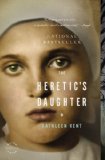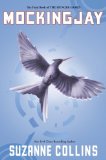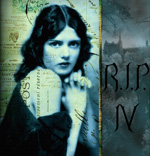 Kathleen Kent has a personal stake in telling the story of Martha Carrier, who was executed for witchcraft during the Salem witch trials: she is a tenth generation descendant of Martha Carrier. The Heretic’s Daughter is a story of the witch trials told through the point of view of eleven-year-old Sarah Carrier, Martha’s daughter, who herself was one of the youngest among the accused. In fact, the real Sarah Carrier was younger than Kent’s Sarah by about five years!
Kathleen Kent has a personal stake in telling the story of Martha Carrier, who was executed for witchcraft during the Salem witch trials: she is a tenth generation descendant of Martha Carrier. The Heretic’s Daughter is a story of the witch trials told through the point of view of eleven-year-old Sarah Carrier, Martha’s daughter, who herself was one of the youngest among the accused. In fact, the real Sarah Carrier was younger than Kent’s Sarah by about five years!
Sarah describes contention against her family and the climate of Andover, Billerica, and surrounding environs prior to the witch trials. She doesn’t understand her mother’s ways, and they seem to be at odds with each other all the time. Then whispers of witchcraft start finding their way to Sarah’s ears, and before long the entire Carrier family is embroiled in the trials.

The Heretic’s Daughter is beautifully written and poignant. However, it’s also slow to start. The first half of the book moved slowly for me, but after the witch trials begin, the book finds its stride and moves quickly. I read the second half in one sitting. I did enjoy Kent’s portrayal of the Carrier family’s contentiousness, which does much to explain why their neighbors turn on them—and in fact, it was often contentious men and women who were accused. It’s also refreshing to read a book that seeks to portray the accused realistically instead of glorifying them as saints. It is mostly well-researched and rings true with the exception one glaring mistake—Giles Corey, one of the most famous figures in the trials because of his resistance and his major role in Arthur Miller’s The Crucible, is called Miles Corey in this book. Not only is that a strange mistake given the attention to detail Kent otherwise displays, but it’s astonishing that an an editor didn’t catch the error. However, setting that issue aside, the book itself is more accurate than Miller’s play, and I found it much more enjoyable to read, too.
I’m glad I persevered with this book through the slow beginning—which did have some beautiful passages, good description, and it laid essential groundwork—the second half of the book was worth the investment. Readers might also be interested in Maud Newton’s interview with Kent.
Rating:




This book is my second book for the R.I.P. Challenge, which means I have officially finished at the level to which I committed; however, I am going to read Dracula, My Love and Wuthering Bites in the hope that I can read four books and move up a level in the challenge.






